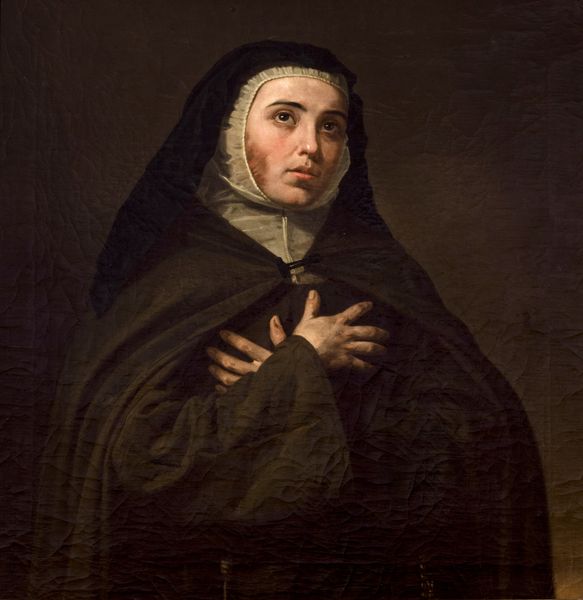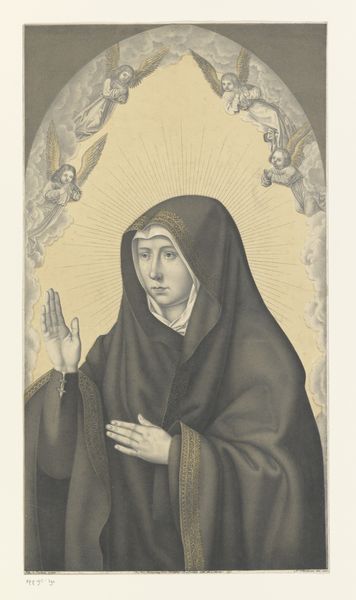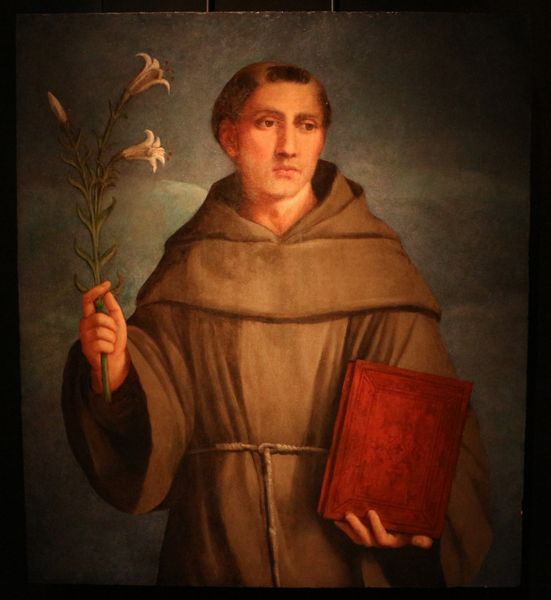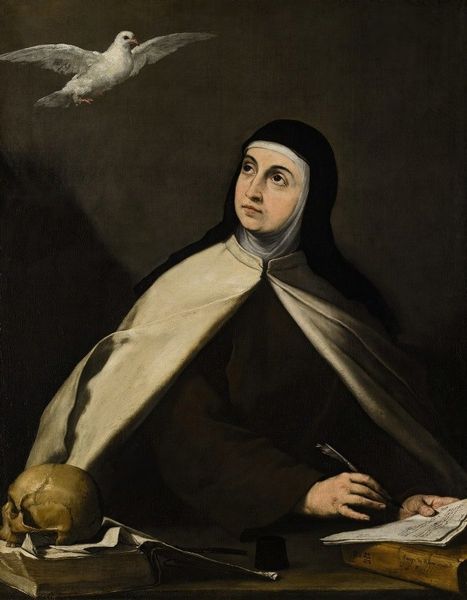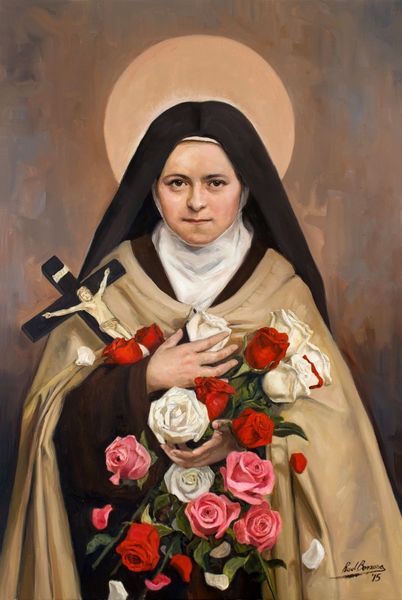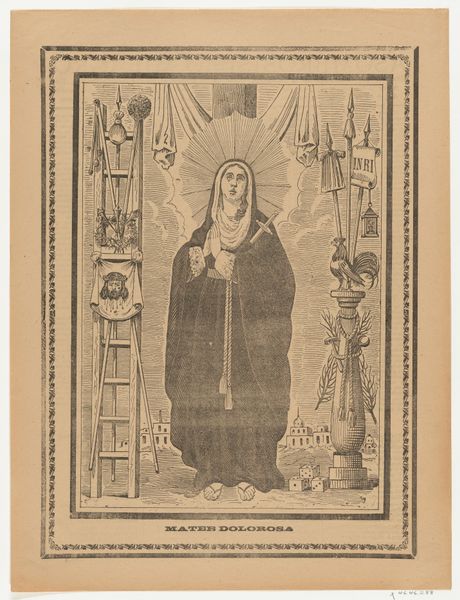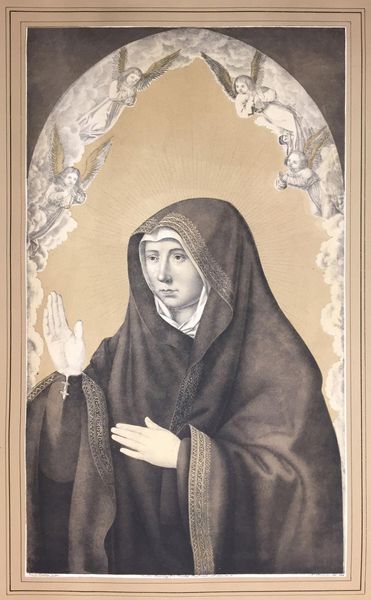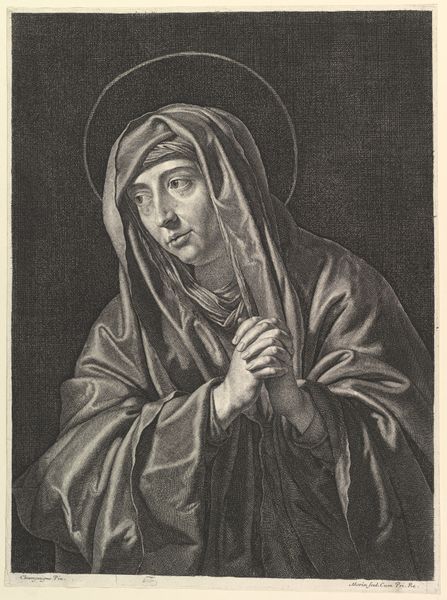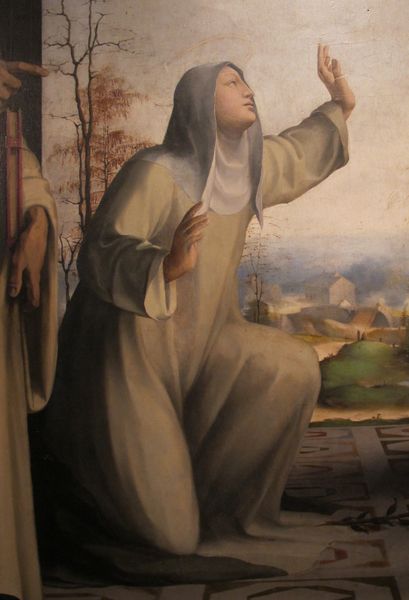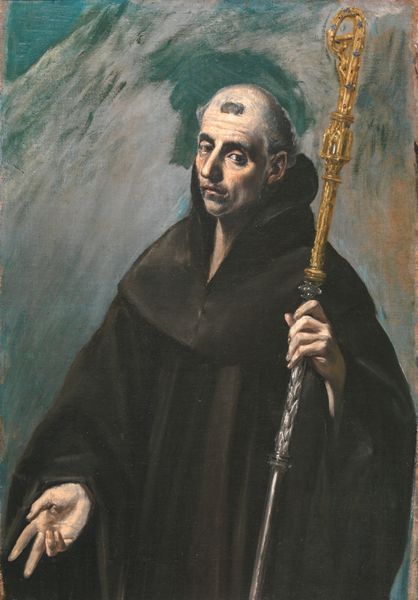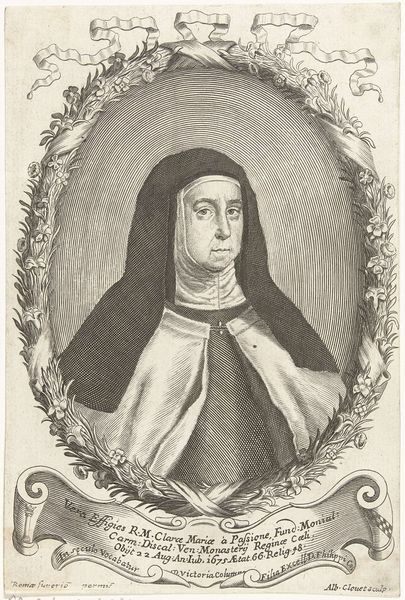
Dimensions: 79 x 78 cm
Copyright: Public domain
Curator: This is Alfred Dehodencq’s “Saint Teresa of Ávila,” painted around 1860. It's an oil painting that feels very much rooted in Baroque traditions, despite its later creation. The depiction is arresting. What strikes you initially about it? Editor: The limited color palette is interesting to me. The heavy use of blacks and whites and sepia tones really creates a sense of seriousness and reverence. The artist's materials feel almost…monastic, maybe. What do you see in this piece that speaks to this context of its making and viewing? Curator: Precisely! I think focusing on the *materiality* is key here. Consider the labor involved. Religious iconography had become a mass-produced commodity by the mid-19th century. So why commission a painting, an object requiring significant time, skill, and expensive materials, instead of purchasing a mass produced lithograph, for instance? Editor: Hmm, so the *choice* of the medium speaks to something… a certain investment beyond mere devotional purposes? Curator: Exactly. Who was the patron, and what social meaning did such a deliberate display of artistry hold? Dehodencq may have aimed to align his craft with the Counter-Reformation fervor Teresa represents. The painting thus becomes a testament to particular beliefs *and* social standing made tangible through material display. Notice how the quality of brushstroke differs in Teresa's face versus the heavy cloak. The focus on these tactile differences makes us, as viewers, consider *how* this was made. Editor: So, understanding the process gives the image additional cultural and economic context. It emphasizes both the saint's enduring importance and the patron’s world, as brought out by the painter. Curator: Right! It also brings to the fore the complex and layered role of religious imagery within the dynamics of the art market and social identity. Thinking about production costs helps to expand our thinking. Editor: I never would have thought of approaching a religious painting this way, focusing on how its construction affects the cultural impact of its production!
Comments
No comments
Be the first to comment and join the conversation on the ultimate creative platform.
